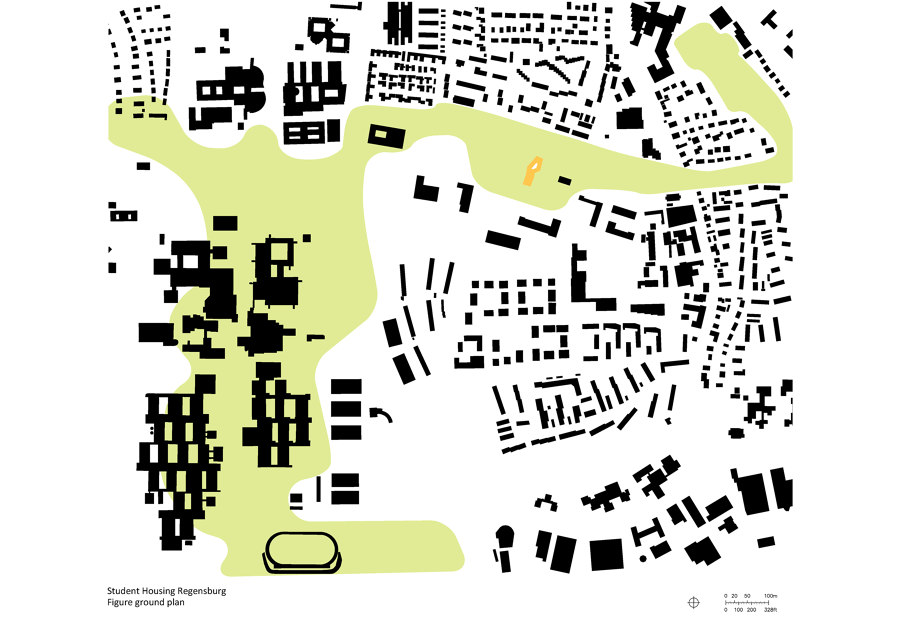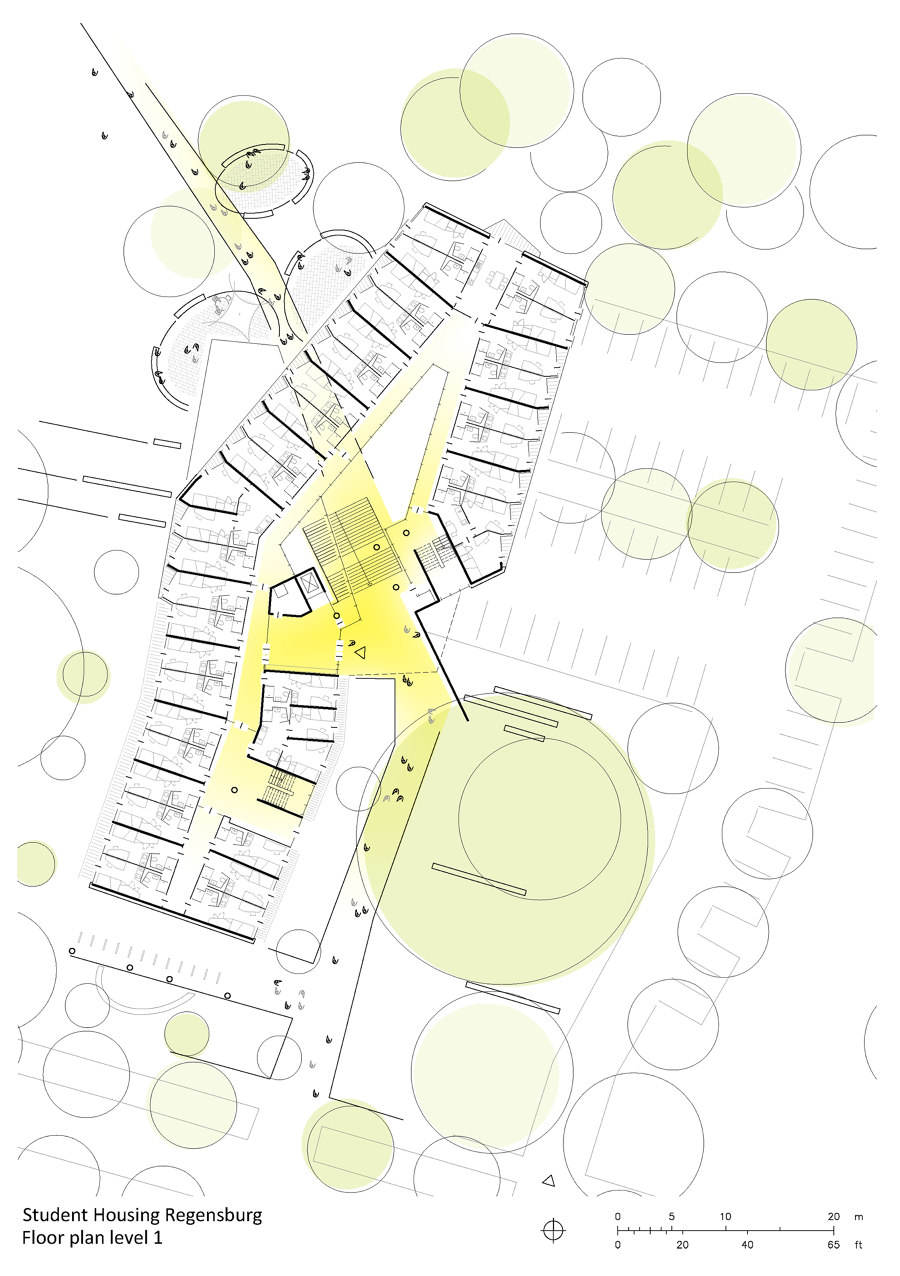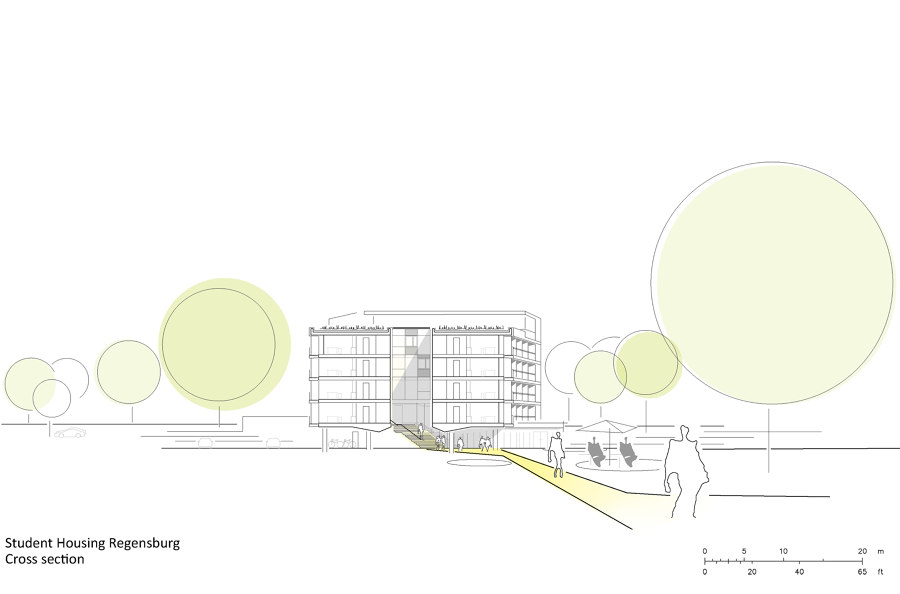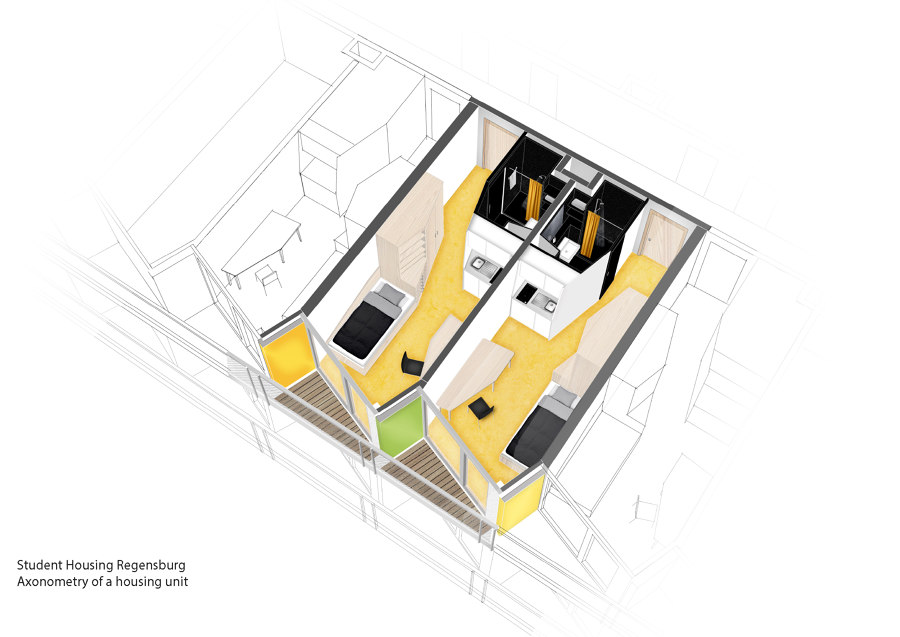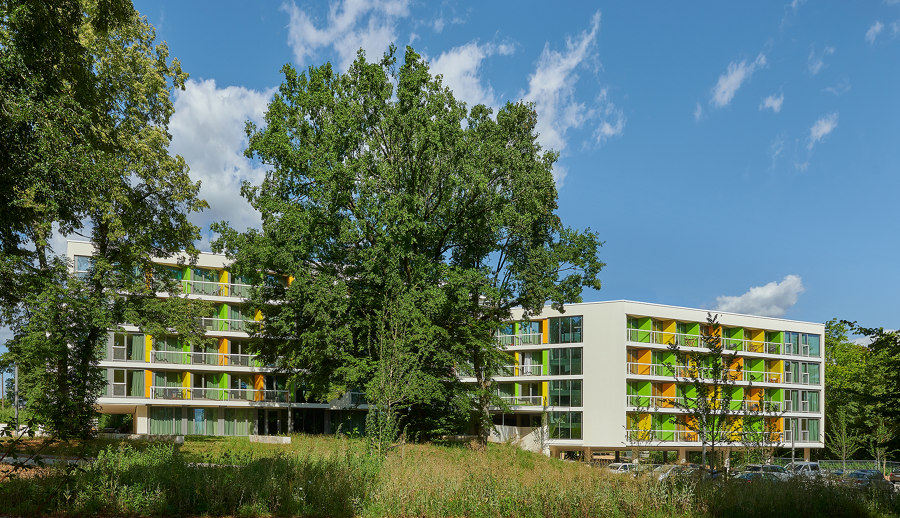
Fotografo: David Matthiessen

Fotografo: David Matthiessen
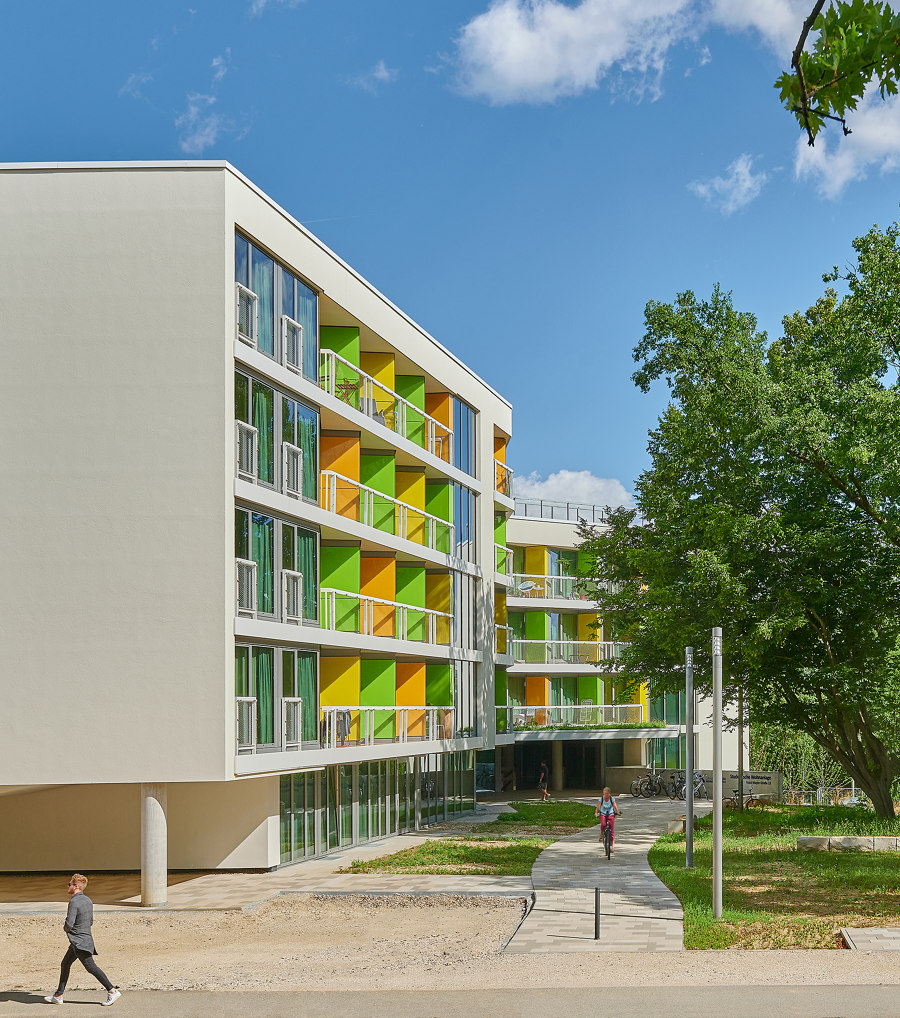
Fotografo: David Matthiessen
The area containing Regensburg’s former Nibelungen Barracks with its protected historic buildings is notable for its extensive green spaces and beautiful old-growth trees. For this site, which is near the city center and in close proximity to the university of applied sciences (OTH), the university, and the university hospital, Behnisch Architekten has constructed a residential complex designed for 204 students and intended to harmonize with the natural surroundings.
The skewed axial alignment of the elongated, five-story building, which is staggered in height along its eastern side, allows the structure to keep its distance from the existing oak and helps create a striking entrance area. The northwest side offers additional space for premium, open-air leisure areas.
Connecting the street, building, and green areas
The core idea behind the design was to connect Franz-Mayer-Strasse to the south with the building and stretch of green to the north. A newly created public footpath offers the main means of access and opens out onto a wide and inviting set of stairs located near the entrance area, which leads down to a protected courtyard and doubles up as a stage for events and other purposes. The public communal areas on the garden level offer seating, a barbecue area, and other recreational amenities both inside and outside the building allowing the hustle and bustle of student life to play out undisturbed. Islands of green are embedded around the site, offering a space for students from all over the world to meet and converse, thus filling the Nibelungen complex with life.
Common areas and individual rooms
The residential units—with a total of 204 beds located in 138 individual apartments, each measuring ca. 19 m2, 17 shared spaces for two people, and 8 for four people—face either toward the west or east. The access areas widen at specific points and, along the north side of the building, open onto a central courtyard that traverses all floors, allowing for natural lighting and ventilation and offering yet another space for students to meet in. The closed elements of the facades reflect daylight and sunshine onto the sides of the corridors opposite and become increasingly transparent in the lower stories. Different color tones on the floors and walls, coupled with textual and graphic elements, help guide visitors and residents through the building.
In contrast to the accented coloring of the communal areas, the individual student rooms, each with their own balcony, built-in kitchen, bathroom of finished sheet-metal components, are kept warm and tactile and are furnished with polygonal wooden furniture. Heating is provided by finned tubes—mounted vertically next to the window frames—that have an integrated ventilation system. This type of heating regulates the intake of fresh air, thus guaranteeing optimal air quality and a comfortable environment for residents.
Colored balcony facades
The exterior of the building is defined by the balconies’ play of light and shadow. The distinctive coloring of the closed glass panels is inspired by the seasonal color changes of the surrounding trees. The slanting elements of the facades help block the view to neighboring balconies while at the same time offering structural protection from the sun. The continuous handrail and parapets, filled with stainless-steel meshwork, reinforce the appearance of transparency and, together with the light-colored banding, give horizontal structure to the facade.
Design team:
Behnisch Architekten, München
Client: Studentenwerk Niederbayern/Oberpfalz
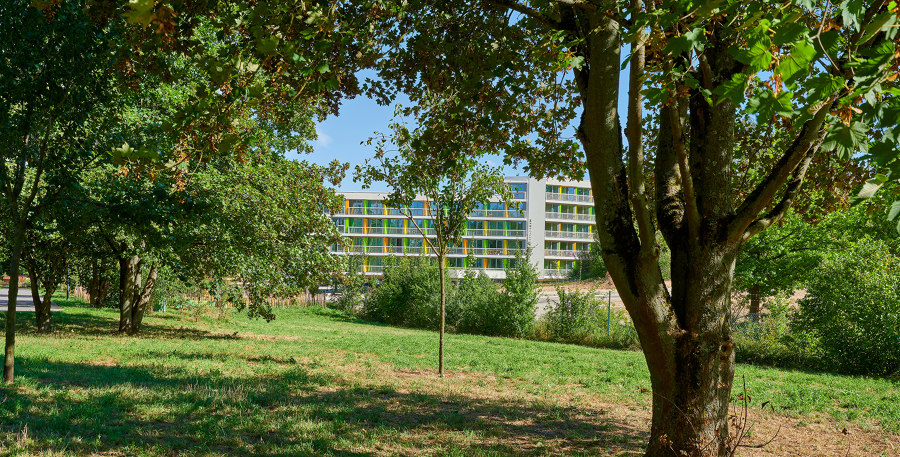
Fotografo: David Matthiessen
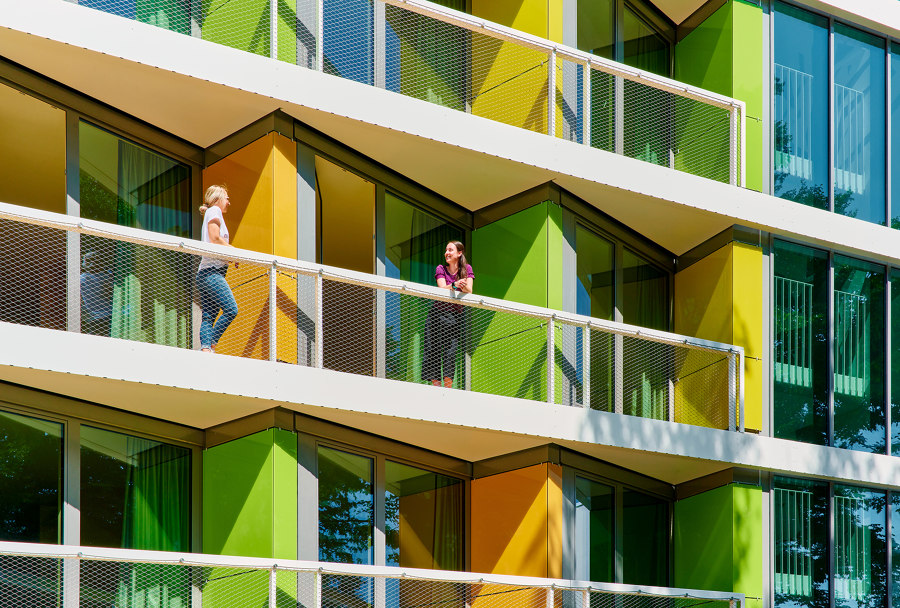
Fotografo: David Matthiessen
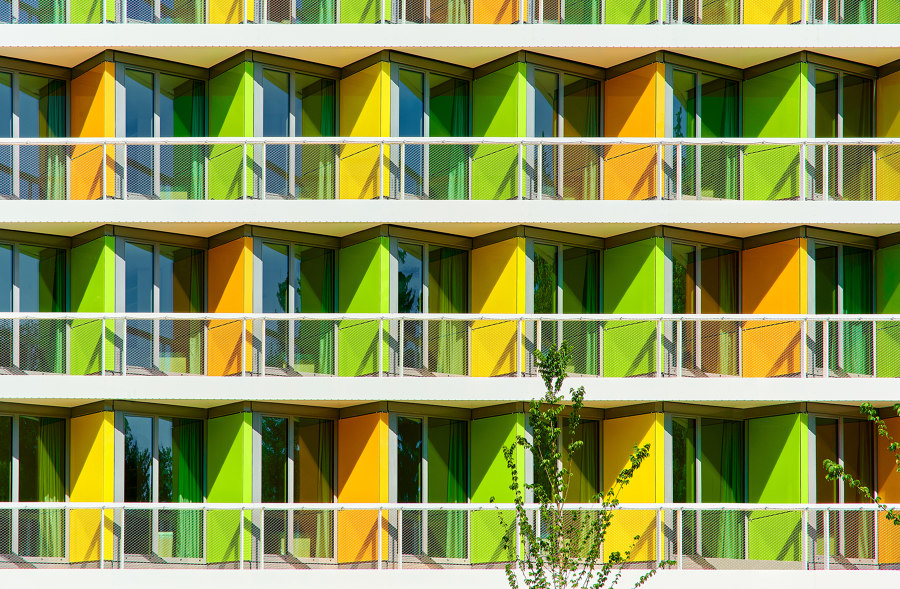
Fotografo: David Matthiessen
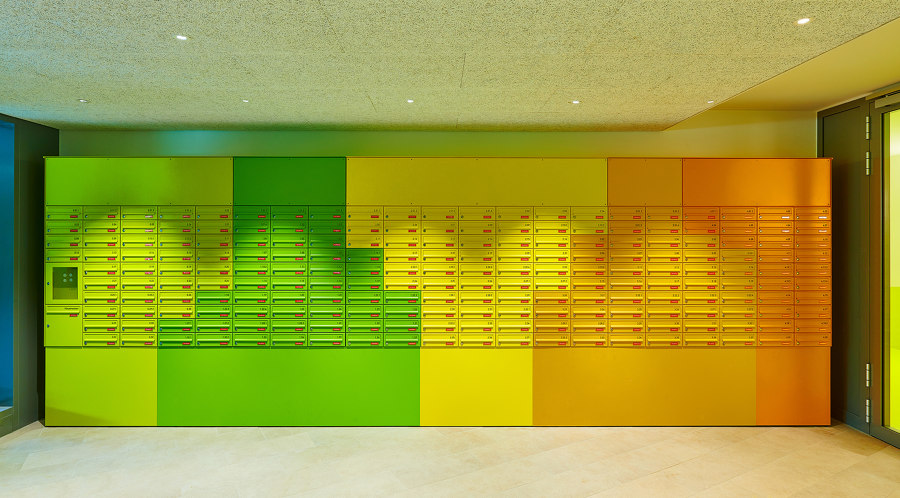
Fotografo: David Matthiessen

Fotografo: David Matthiessen
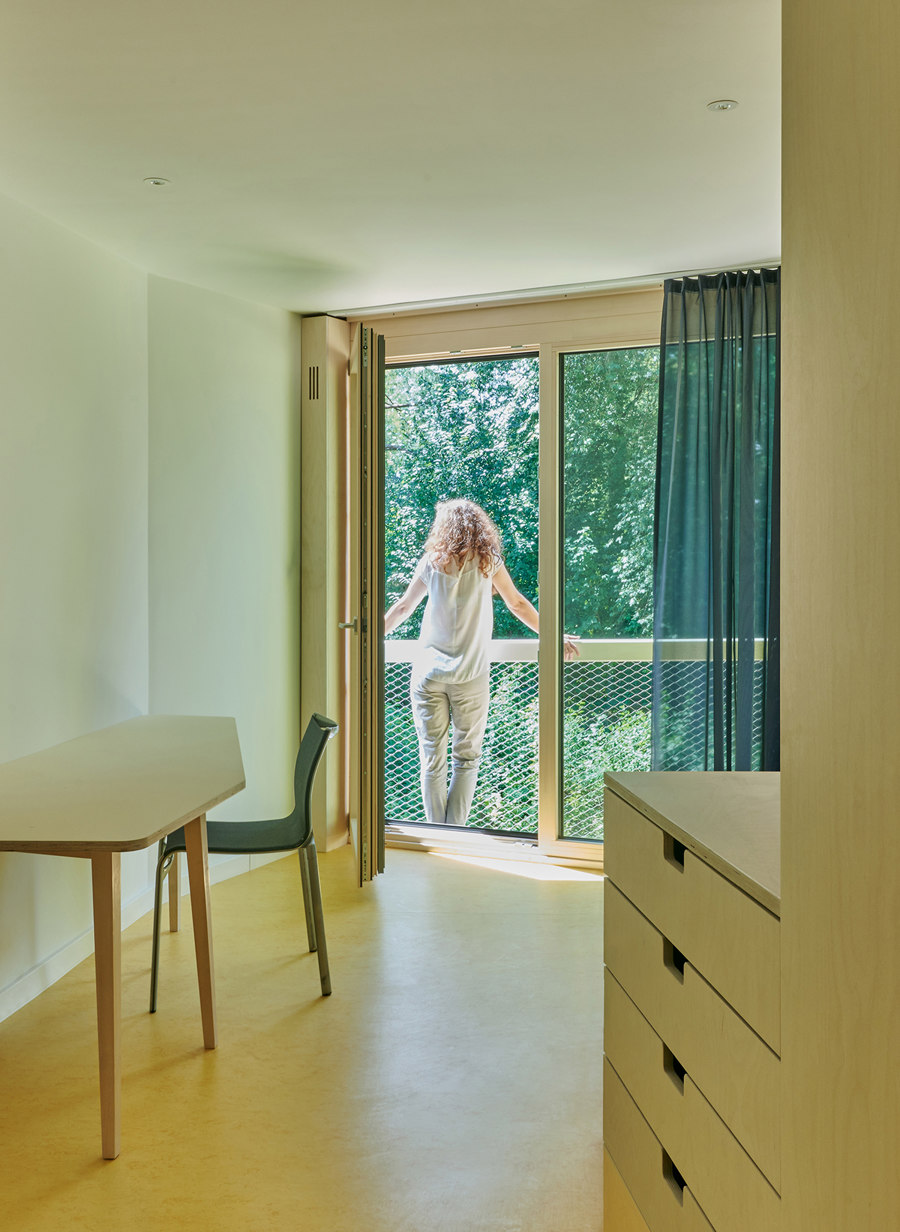
Fotografo: David Matthiessen
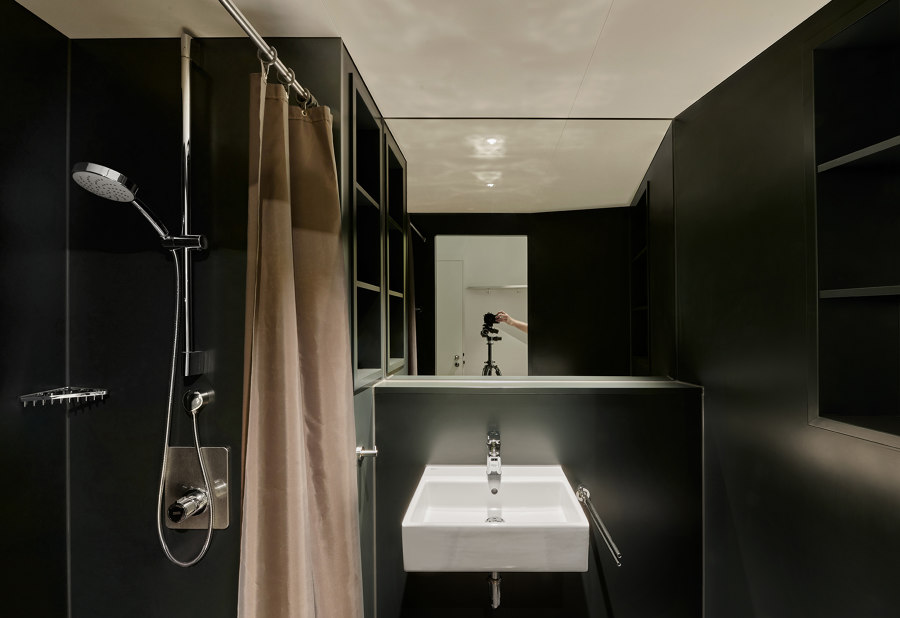
Fotografo: David Matthiessen

Fotografo: David Matthiessen
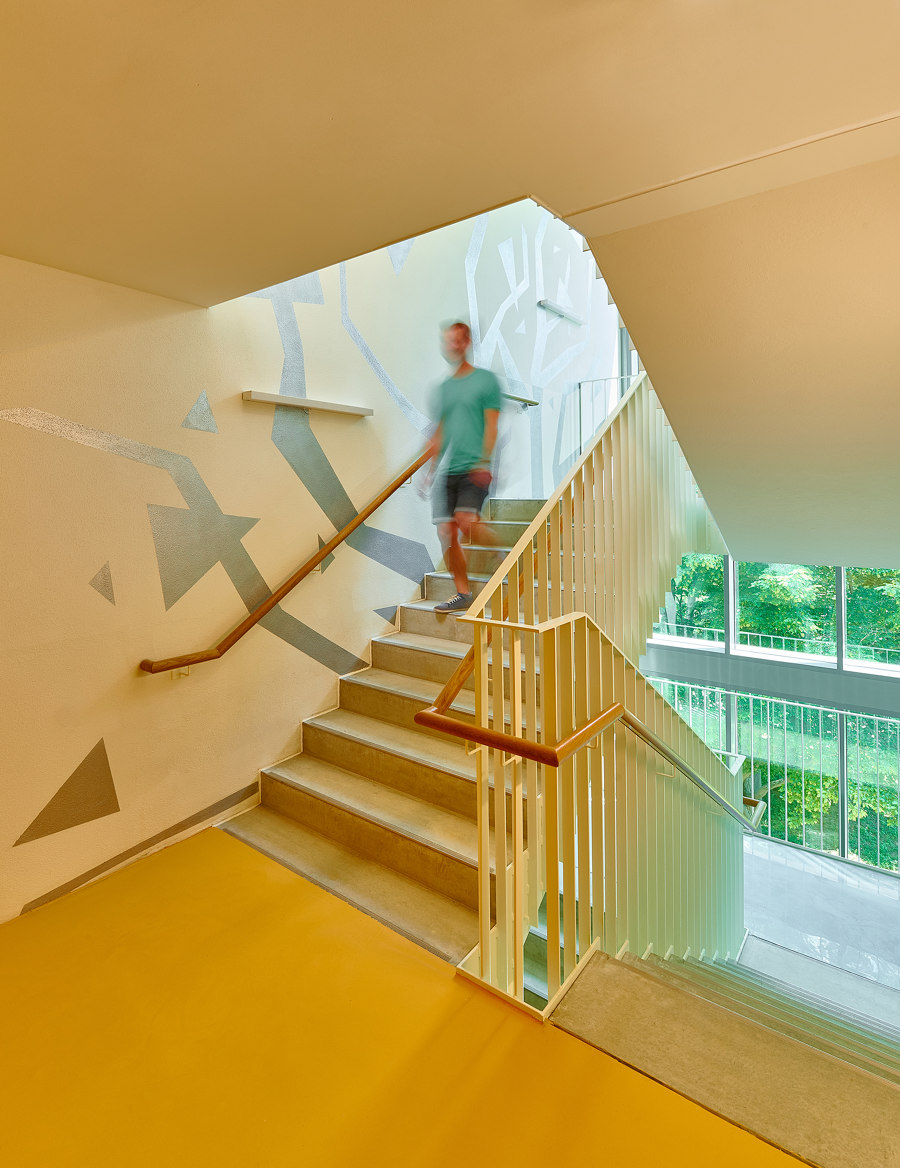
Fotografo: David Matthiessen

Fotografo: David Matthiessen
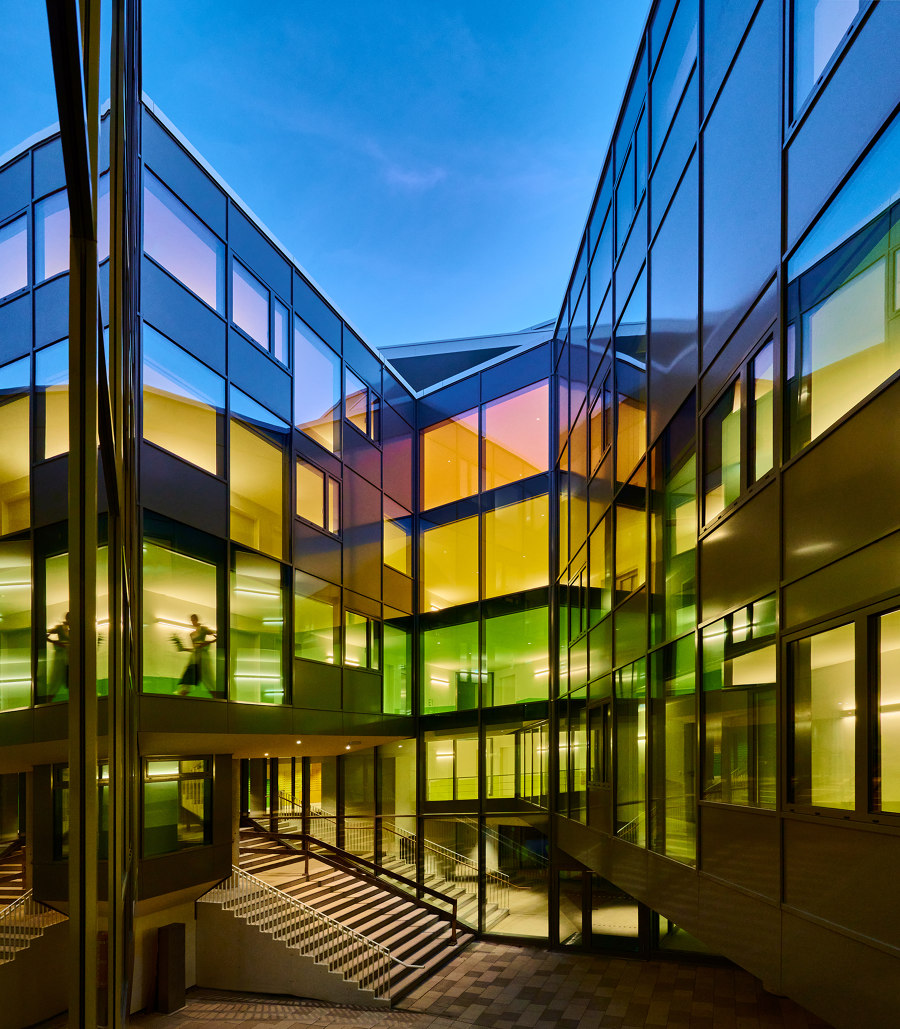
Fotografo: David Matthiessen














